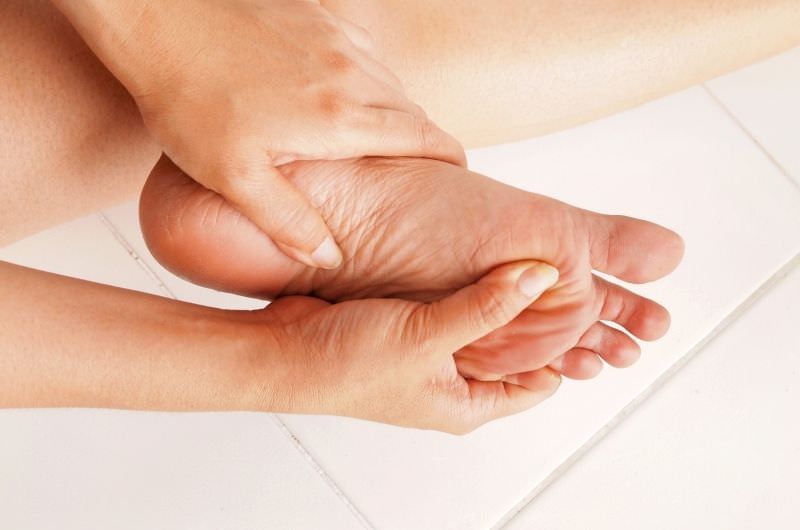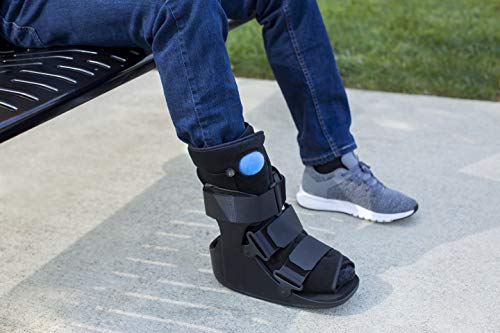Accessory navicular surgery comes as the final solution in treating conditions in the foot after the conservative means fail. The Kidner procedure may be the ultimate solution to stop the pain and inflammatory episodes, not to talk of nerve and tendon damage. Still, it comes with many advantages and disadvantages.
For instance, you may achieve instant relief and a chance to reshape your foot, among other benefits. But also, you may take a long time to heal, and the extra bone may reoccur and incur a lot of financial costs, among other disadvantages of the Kidner procedure.
The accessory navicular happens to be an extra bone that develops on the inner center arch of your foot. This extra bone may be small and asymptomatic, while others get bigger and become painful and uncomfortable for most people.
About 14 percent of the world’s population suffers from this condition. This condition may be genetic in most cases or caused by the following secondary factors.
- Low-lying arches cause strain on your posterior tibial tendons
- Injury or trauma
- Excessive activity causes overuse, especially in athletes
- Wearing footwear that constantly rubs against the navicular bone
In the asymptomatic case, it may go unnoticed and cause no difficulty for such people.
On the contrary, people who find this condition uncomfortable may experience pain and sensitivity at the central ankle area where the bone appears. You may even feel the bump signifying the presence of accessory navicular.
The accessory navicular condition has two methods of treatment. You may get non-operative care or operative care which involves surgery to remove the extra bone.
Discomfort gets realized when the shoe pressure irritates the bone or fibrous junction. In this fibrous junction, the extra bone meets the normal navicular bone. It may become painful when the posterior tibial tendon exerts stress through its insertion or attachment to the accessory navicular location.
Most people realize this extra bone during puberty. It happens that the two sections forming the navicular bone fail to fuse successfully.
When this happens, the accessory navicular bone may develop. You will realize a bony appearance below the inner ankle of your foot.
Non-operative treatments for accessory navicular
- Immobilization with a walking boot. This boot helps relieve the affected foot of pressure and allows the inflammation to subside.
- Heat therapy by applying ice to help ease inflammation and pain
- Over-the-counter non-inflammatory non-steroid medication for mild pain and inflammation.
- Injections or oral steroids get administered for severe pain and inflammation.
- Physical therapy. This procedure helps strengthen any affected muscles and reduces the chances of the symptoms reoccurring.
- Use of orthotics and shoe inserts. These will help support the arch and tendons, helping in reducing the strain on the foot tendons.
In the first stages upon diagnosis, most doctors will opt for this non-operative procedure. If the symptoms worsen or the non-operative treatment doesn’t work, the doctors will advise on an operative procedure commonly known as the Kidner procedure.
In this procedure, a surgeon will surgically remove the accessory navicular to aid in your comfort. However, the Kidner procedure comes with many advantages and disadvantages alike.
In this article, let’s have a look at the pros and cons of accessory navicular surgery.
Pros of accessory navicular surgery
1. This surgery may relieve you of pain from tendonitis
The pain you may be experiencing may be due to the extra bone rubbing against some tendons on your foot.
This discomfort will continue for a long time, especially during vigorous walking activity. You may even find it challenging to shift pedals during driving. When the rubbing between the bone and tendons continues, it creates internal injuries, which may swell.
In other times, fluid builds up along these tendons, and the situation becomes very challenging. Upon surgery, this pain and inflammations gradually disappear.
You get to feel better and find it easy to fully resume your normal life routine once you fully recover from the surgery.
2. You will recover from Kidner procedure in a straightforward manner
Some surgeries don’t provide a clear recovery outline. Accessory navicular surgery, on the contrary, provides a straightforward technique for your recovery journey.
The healing journey may get broken down into the following steps.
- During the first month of healing, bear no pressure on the affected leg. Rest more often with bending and straightening of the knee and hip only. Wiggling your toes at this healing stage proves essential too.
- Towards the second-month post-surgery, you may try walking on the foot and stop once you feel pain.
- Remember to use crutches until you start walking without a limp. Once you get to this stage, you will get an ankle brace to help you exercise and attend your therapy sessions.
- By the third month, you will normally be walking again.
So, Accessory Navicular surgery guarantees you straightforward healing.
3. In some people, the Kidner procedure provides immediate relief
The pain associated with this medical condition proves unbearable to some patients. The fluid buildup and the discomfort associated with accessory navicular may be very uncomfortable.
After the surgery and healing, you will notice immense relief and comfort starts to resume when applying pressure on the previously affected foot.
So, accessory navicular surgery will be a significant step in achieving immediate relief for tendinitis in most patients. You may be one of them.
4. The surgery will restore functionality to your foot
The accessory navicular condition renders the foot nonfunctional when pain, fluid buildup, swelling, and sensitivity become your everyday suffering.
You will often not use the foot for walking or standing in fear of experiencing these discomforts. After surgery, the foot gets functional again. Once you have fully healed, you will walk, run, and run once again.
Driving and carrying heavy luggage will not be a bother again.
5. In most cases, the Kidner procedure helps in reshaping your foot
The extra bone does not help in the normal functioning of your foot. The bone extension contributes to an abnormal foot shape that comes with a lot of inconveniences.
During the surgery procedure, your orthopedic surgeon may perform reshaping procedures. These procedures will help in improving your tendons where the extra bone had affected.
Thus, you will gain a new foot shape that will help in restoring your mobility once more.
6. You may be lucky to get a discount on the surgery procedure
When opting for the kindler procedure, you may find luck and get a discount on the surgery cost.
Some hospitals offer a discount for patients paying on a cash basis or if your medical insurance coverage doesn’t cover the cost for the whole surgery procedure.
This way, you get to afford a permanent treatment option for accessory navicular conditions.
California offers a 35% discount on all its patients seeking to have this procedure performed on them.
Some federally funded healthcare facilities also provide the surgery at a lower cost rate.
Cons of accessory navicular surgery
1. The conservative phase of accessory navicular takes long
Before you undergo accessory navicular surgery, your doctor recommends the non-operative treatment option first. This process may also be known as the conservative phase.
In this stage, you may get a medial heel wedge, non-inflammatory medication, a boot/cast, or even physical therapy.
If the symptoms reduce after this procedure, you may resume normalcy with steroid injections opted for in severe pain scenarios.
When the conservative phase, which may last up to 12 months, proves unproductive, you now get eligible for accessory navicular surgery. With severe symptoms, this may prove quite a long period of discomfort and never-ending pain.
2. Recovery from surgery may be lengthy
It takes up to a year for most people to get back to their normal routine. Usually, the surgeon will recommend up to six months until full recovery.
Recovery, however, may take longer depending on the time your start your therapy sessions. Younger people tend to heal faster than older people.
3. Not all people stand fit for the surgery procedure
The operative treatment procedure comes with many difficulties. Most doctors and surgeons don’t allow accessory navicular surgery to be performed on people below 18 years.
4. The Kidner procedure may be costly
If you choose to undergo the Kidner procedure, you will spend up to $17,000 or even more on the surgery alone. Sometimes you have to meet a specific payment limit before the procedure commences.
This cost proves challenging to most financially unstable families.
5. Other associated medical complications may arise
In some cases, some patients don’t get instant or complete relief after the Kidner procedure.
The nerves and tendons may be damaged completely, resulting in chronic pain in those regions after the operation.
6. The extra bone may reoccur
If the cartilage in the extra bone calcifies into another bone, it tends to reoccur even after the operative procedure.
The patient ends up having multiple surgeries to try and remove the newly developed accessory navicular.
A summary of the pros and cons of the Kidner procedure
| Pros | Cons |
|---|---|
| May relieve pain instantly | The healing process may be lengthy |
| Recovery may be straightforward | The Conservative phase may take longer |
| Restores foot functionality | The surgery doesn’t guarantee that the bone will not reoccur |
| May involve reshaping of the foot | Some people may not be fit for the Kidner procedure |
| You may attract a discount on the cost | costly |
| You may get instant relief to the tendons and nerves | Associated medical complications may occur |
FAQs
What percentage of the population has accessory navicular Syndrome?
Research shows that about 14% of the general population suffers from this condition at a particular stage of their lives.
Is the Kidner procedure painful?
Due to the anesthesia provided during the surgery, you may fail to feel any pain. The recovery process may, however, be accompanied by pain.
When is surgery needed for accessory navicular?
Surgery deems vital when the non-operative measures don’t succeed in reducing pain and inflammation. When the situation seems to worsen, then you will require to be operated on.
How long does it take to recover from the Kidner procedure?
On average, it may take up to a year before you get fully on your feet. If you start therapy sessions as quickly as you should, you may feel better within six to eight months after the surgery.
Conclusion
Although the Kidner procedure comes with some disadvantages, I would choose it over the conservative procedure.
The chances for a complete recovery with no complications or re-occurrence of the accessory navicular tend to be high, about 90%. You will also get the chance to resume normalcy and resume your everyday life.
Everything comes with advantages and disadvantages in life. But when the benefits may seem more fulfilling, it’s worth taking the risk.
If you suffer from this medical condition, consider going for the Kidner procedure, and you may be feeling better within a year without ever worrying about the discomfort again.




